 The Power of Words to Resurrect Your Story
The Power of Words to Resurrect Your Story
The legacy of our earliest ancestors left them with two options when confronted with fear – to stay and fight or to run as fast as they could. Those who were good at predicting the outcomes survived and passed this genetic trait down to us.
Faced with this situation – real or imaginary – the brain mobilizes the body’s resources. It sends a rush of adrenaline and other hormones coursing through the body. Our pupils dilate to see better. Our heart pounds and our breath quickens to rush blood and oxygen to our muscles. We might turn pale as blood is directed away from the skin to power the muscles and fuel the brain. We might tremble or shake as our muscles tense, primed to take action. You might even get goosebumps, as tiny muscles flex in the skin, causing hairs to stand up. All triggered by the brain’s prime directive: survival.
When we realize that the danger isn’t real, we are left with a dopamine rush – the “feel good” hormone released in the process. While I adore a good scare, not everyone enjoys the thrills of a haunted house, a wild roller coaster ride, or a spooky story. Neuroscientists believe that may be because our brains have different sensitivities to the dopamine rush.
At an anniversary screening of Halloween many years ago, one of our young interns, now a successful manager and producer, sat beside me. She squirmed throughout, grabbing my arm and practically crawling into my seat in the scariest scenes. “Jamie Lee Curtis is alive and well and sitting two rows ahead of us,” I hissed. It didn’t matter. For her, the dopamine rush was too intense.
Strong storytelling engages us, draws us in, pulls us into the world, and straps us into the shoes of the character. We feel what they feel. Instead of merely observing, we are participating. We are in the moment. Caught up in the spell you’ve woven with your words.
Delicious dopamine cannot be activated with the overly familiar. Our brains have come to ignore phrases that once made storytelling awesome, but have been overused:
Upset the applecart.
Clichés fail to activate our brains. Switching them up with something inventive yet understandable grabs our attention. It delivers more emotional impact and will resonate with your reader.
Shaken like a snow globe.
To keep that dopamine flowing, the words and the elements of your story must be fresh and distinctive.
Read the full article from scriptmag.com
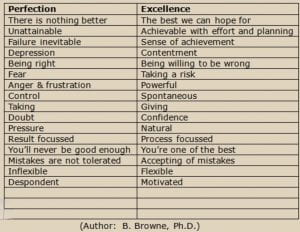 Hello again. I was discussing some of the presentations at a recent writers conference with a good friend who attended. He brought up the notion of perfection in writing vs excellence. The aim was to have writers concentrate on excellence and not try to be perfectionists. Writers should feel safe to make mistakes and be innovative. Which then begs the question, what is excellence in writing? I’m not a 100% sure myself. Some say it’s the point where you cannot improve on the story, plot, characters, etc. I agree, but I’m going to stick my writer’s neck out and also suggest that the manuscript being submitted needs to be free of obvious errors, grammatical mistakes, etc. If it isn’t it will be a turn-off for any literary agent or, in the case of self-published work, a negative experience for the reader.
Hello again. I was discussing some of the presentations at a recent writers conference with a good friend who attended. He brought up the notion of perfection in writing vs excellence. The aim was to have writers concentrate on excellence and not try to be perfectionists. Writers should feel safe to make mistakes and be innovative. Which then begs the question, what is excellence in writing? I’m not a 100% sure myself. Some say it’s the point where you cannot improve on the story, plot, characters, etc. I agree, but I’m going to stick my writer’s neck out and also suggest that the manuscript being submitted needs to be free of obvious errors, grammatical mistakes, etc. If it isn’t it will be a turn-off for any literary agent or, in the case of self-published work, a negative experience for the reader.
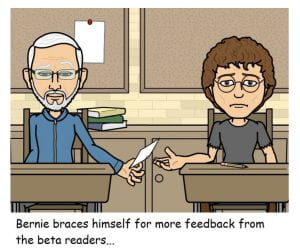 I value my Beta Readers. Like gold, they shine bright and their feedback is invaluable. A keen reader of thrillers – who has devoured over 30 books this year so far – has just finished my book. He was tasked with general feedback, rather than detailed analysis. The golden nugget for me was his comment that he felt the story only got flowing with the submarine action. This got me thinking about the sequence of chapters and made me realise that I could bring the underwater action forward. After some heavy cut-and-paste, this action now begins at Chapter 3 and the story is better paced and more engaging. My reader made a few other passing comments which has led to further tweaks and a better novel. This one made me smile;
I value my Beta Readers. Like gold, they shine bright and their feedback is invaluable. A keen reader of thrillers – who has devoured over 30 books this year so far – has just finished my book. He was tasked with general feedback, rather than detailed analysis. The golden nugget for me was his comment that he felt the story only got flowing with the submarine action. This got me thinking about the sequence of chapters and made me realise that I could bring the underwater action forward. After some heavy cut-and-paste, this action now begins at Chapter 3 and the story is better paced and more engaging. My reader made a few other passing comments which has led to further tweaks and a better novel. This one made me smile; The Power of Words to Resurrect Your Story
The Power of Words to Resurrect Your Story Alaa Al-Barkawi says, “Growing up Iraqi Muslim American post 9/11 and during the US occupation of Iraq, I was constantly flooded with images of my people as the villains, and it affected my work as a writer…Through many trials, plot changes, and mental breakdowns…not only did I have a newer, shinier draft—but a new story I didn’t know existed in this book!”
Alaa Al-Barkawi says, “Growing up Iraqi Muslim American post 9/11 and during the US occupation of Iraq, I was constantly flooded with images of my people as the villains, and it affected my work as a writer…Through many trials, plot changes, and mental breakdowns…not only did I have a newer, shinier draft—but a new story I didn’t know existed in this book!”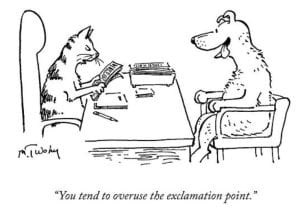
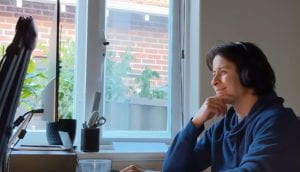 A writer (
A writer (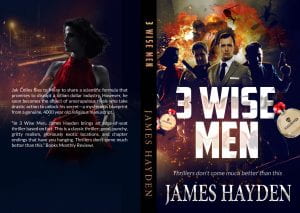
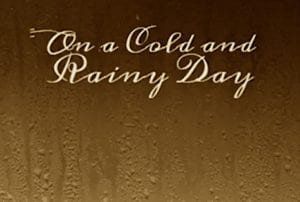 What to do on a cold and rainy day? I could finish painting the spare bedroom, but the weather is damp and the paint won’t dry very well. I could take my wife out for a coffee, but she is ill and resting. I could keep editing my new book—or, rather, what I call fine-editing since the major editing is finished. No, I need a new inspiration. So, I decide to work on my first book; produce a new cover, revise the first chapter and update the About the Author page. My goal is to have this done in three days. Meanwhile, my darling publisher Amazon have changed their Kindle format from .mobi to .pub, so that requires more work :-). The next day, I have a head cold and don’t feel like doing much at all. But, the weather is warmer and the painting is almost finished. I’m praying for a better week ahead and a new-look to the bedroom as well as my first book. More news to follow if all goes well. {PS: good progress on both the bedroom renovation and book revisions. The text changes are done and have been uploaded to Amazon. Now I am working with my illustrator with final touches to the cover. All will be revealed soon}
What to do on a cold and rainy day? I could finish painting the spare bedroom, but the weather is damp and the paint won’t dry very well. I could take my wife out for a coffee, but she is ill and resting. I could keep editing my new book—or, rather, what I call fine-editing since the major editing is finished. No, I need a new inspiration. So, I decide to work on my first book; produce a new cover, revise the first chapter and update the About the Author page. My goal is to have this done in three days. Meanwhile, my darling publisher Amazon have changed their Kindle format from .mobi to .pub, so that requires more work :-). The next day, I have a head cold and don’t feel like doing much at all. But, the weather is warmer and the painting is almost finished. I’m praying for a better week ahead and a new-look to the bedroom as well as my first book. More news to follow if all goes well. {PS: good progress on both the bedroom renovation and book revisions. The text changes are done and have been uploaded to Amazon. Now I am working with my illustrator with final touches to the cover. All will be revealed soon}